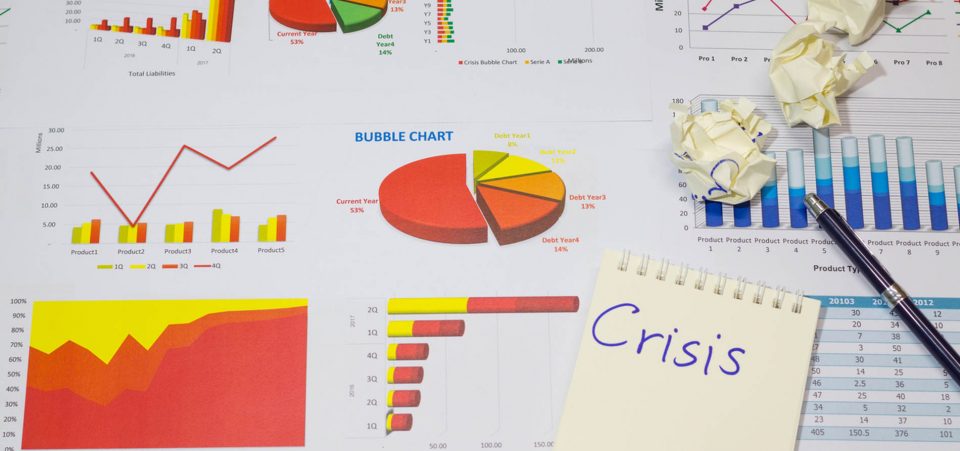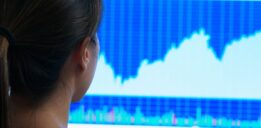Are We in a Tech Bubble?
The question is not “Is there a tech bubble now?” It’s not even a question of when the next tech bubble will burst. The better questions might be: “When will the tech bubble 2017 have its final particle of air?” or “How many people will end up losing their money?” At least we can stop worrying about it, since the tech bubble is alive and all too well.
Raise your hand if you know what WeWork is. It’s a tech startup that’s slated to become one of the unicorns to go public in 2017. In 2016, it was worth over $16.0 billion, similar to Snap Inc (NYSE:SNAP) before it went public. WeWork is global office space lessee, thus it’s a real estate company. But it behaves like a tech startup because its valuation is ridiculous.
That might be simplistic, but rather clearly, it’s the tech bubble explained in a few sentences. Snap Inc aka Snapchat, is something of a time machine. Its IPO, whereby Snap shares made their Wall Street debut at $27.00 on March 2, 2017, should have reminded investors of such stock market classics as Pets.com.
Many of the causes and effects of a tech bubble are evident now. There is heavy speculation (i.e. the cause) as investors confuse the strength of an entire industry or sector with that of individual companies or stocks. Thus, they end up paying through the nose for some stocks. Just as in 1999 or 2000, if you bought Amazon.com, Inc. (NASDAQ:AMZN), then you got a winner. But if you got Pets.com, then you got a dog’s breakfast.
Both companies, Pets.com and Snap that is, offer breathtaking benefits to mankind. No, they haven’t found a clean and efficient new form of energy. Rather the first promised to send dogfood to your house and the second allows people to chat with self-erasing messages. Snapchat must appeal to all those who wanted to be James Bond, growing up.
What with the self-destructing messages, Snap comes dangerously close. Yet, the real Snap explosion might concern its stock. After ballooning to $27.00 in March, SNAP stock now trading at $18.00. All it took is two months for a reality check. And, it’s merely the start.
Will the Tech Bubble Burst?
Snapchat and WeWork aren’t the only companies whose valuations should be arrested for breaking the laws of gravity. Have you heard of Uber Technologies, Inc., Airbnb, Inc., Xiaomi, and Palantir Technologies? These are the so-called unicorns that could issue IPOs soon. They are companies born out of nowhere, which have managed to gain unrealistic valuations in a matter of a few years. Compare the general economic indicators of the 1999 tech bubble and the one that’s about to blow.
By comparison, a company like Deutsche Lufthansa AG (OTCMKTS:DLAKY), one of the most successful and efficient airlines in the world with decades of experience, is worth peanuts. Its market cap is $5.6 billion. That’s barely enough to cover the costs of a fraction of its airliner fleet. Yet, Uber has no fleet. It relies on its drivers. They own their vehicles and pay for their cars’ maintenance. As for Palantir? It’s worth over $20.0 billion.
The one thing that Uber was developing, driverless car technology, has gotten it in trouble with giants like Google—owned by Alphabet Inc (NASDAQ:GOOG)—and Apple Inc. (NASDAQ:AAPL). Google has accused Uber of violating proprietary information and technology related to self-driving cars. Apple has accused Uber of violating terms of use (namely the practice of fingerprinting) and threatened to block the “Uber” app from “iPhones.” (Source: “Uber’s C.E.O. Plays With Fire,” The New York Times, April 23, 2017.)
There are simply too many tech companies that are ridiculously valued (we’re beyond overvalued territory). They are as unrealistic as they were before the Tech Bubble of 2000 burst—both for what they can do and simply because of their actual value in assets. The markets are being buoyed by another wave of “irrational exuberance” as former Fed Chair Alan Greenspan put it.
Snap Inc, Uber, and Palantir Are Tech Bubble Companies
The Ubers, Palantirs, and Snapchats of this world are tech bubble companies. Perhaps the unicorns will remain unicorns. The investment bankers who have been busy plotting and planning their IPOs might spare investors yet. The Snap Inc experience should have offered a sober lesson by now.
After an improbable IPO and market capitalization to rival established S&P 500 leaders, Snap is going crackle and pop. That’s not the sound of a popular breakfast cereal. It’s the sound of the tech bubble bursting. Has the tech bubble peaked then? Not yet.
Unfortunately, we can recognize bubbles after the fact. But bubbles cannot be prevented. It’s the nature of the game. To make this point, I again reiterate the above example of Lufthansa. But, it works just as easily for General Motors Company (NYSE:GM)—out-market-capped by Tesla Inc (NASDAQ:TSLA), despite GM having made some eight million cars last year to Tesla’s 50,000 at best.
Yes, Lufthansa, GM, or Ford Motor Company (NYSE:F) have experienced better days. But, they are the definition of solid companies. They have thousands of employees, a massive global presence, and the flexibility to change their business approaches whenever necessary. They are not, as is the case with many tech companies, dependent on a single or handful of products. They are overvalued stocks.
GM pioneered the modern electric car in the 1990s. GM was also strong enough to kill the project once it was proven to be unprofitable. Tesla Inc has, to its credit, made electric cars profitable, thanks in no small part to Hollywood messianic-style enthusiasm. But, GM and Ford have responded. Indeed, GM already has a mid-price electric sedan in some U.S. dealerships. The “Tesla Model 3” is nowhere to be seen.
Yet, Tesla stock’s valuation has taken off on the company’s promise to sell and deliver up to 500,000 cars by 2018. Well, at least, the company is not far from Hollywood, where dreams are made. As for Lufthansa, apart from its assets, it is one of the largest airline networks in the world. If a company leasing lofts, however convenient its service might be, is worth much more (an estimated four times more) than it should be, then it’s the proverbial “Houston, we have a problem” moment. Except, the alert should be sent to Wall Street instead of Houston.
The Problem Is That the Tech Bubble Burst of 2017 Is Coming
It’s no wonder, then, that we are talking about the next tech bubble. It’s already happening. The best thing investors can do now is stop wondering about the next tech bubble. Rather than questioning when, it’s time to question the size of the bubble and how safely and quickly you can avoid exploding with it.
Many will lose their money. Some will lose their shirt too; will you be one of them? Not all is lost, there are other sectors—defense for example—and other markets to consider for safer investing. That is, after you’ve considered the tech bubble’s potential for contagion. Bubbles are never the sign of health. In humans, bubbles are associated with all manner of infections. Some of these are highly contagious, like the plague, for instance.
That is not to say that some of the tech companies, whose capitalizations are rising in the midst of the tech bubble, aren’t worthy of consideration. There are many that have reasonable stock prices. It’s a matter of picking the right ones. It’s not unlike a target shoot. You might hit the bullseye with a machine gun, wasting many bullets along the way, which won’t even make the scoreboard. Or, you can hit the bullseye with one shot and one bullet if you aim correctly.
Bubbles rely on excitement. Rarely does too much excitement contribute to rational decisions. New technology and novelty in general attracts rapid-fire investing. Think of the Tulip or South Seas bubbles of the 17th and 18th centuries. And just as with the railways or steel in the 19th century or computer hardware in the 1970s and 1980s, resources in the late 2000s attracted a machine-gun-style investing approach.
Bubbles Sink All Ships, Even the Safe Ones
There were many losses and some wins. Bubbles tend to sink all ships, but some recover. You pick the ones that recover with rational analysis. Facebook Inc (NASDAQ:FB) was a tech unicorn. Its IPO was riddled with questions about its business and revenue models. It survived and thrived, but it was rather unique when it went public. It was the first of its kind. Twitter Inc (NYSE:TWTR) has been less than successful. Snap Inc is based on a quirky feature that could be replicated and made better by Facebook.
Indeed, even the housing bubble that led to the sub-prime mortgage crisis and the collapse of Lehman Brothers Holdings, Inc. in September of 2008 can be attributed to variations of the same phenomenon. There’s a dangerous phenomenon of a tech bubble in 2017 vs. a housing bubble. Apart from tech stocks having reached insanely high valuations—amid even more insane expectations—house prices have also inexplicably started to rise again.
The tech bubble sank the Pets.coms and Excite.coms of the world, but it also left the Amazons and Googles of this world to thrive. Perhaps the wild exaggerations of the dotcom bubble of the late 1990s won’t be repeated now. But that depends on how long a memory or knowledge of recent history investors have.
The evidence so far does not bode well. Expectations in the 1990s became boundless. The future had an air of redemption that has not seen its match yet. Now, the bubble is inflating amid fear for the future. Automation and robots could totally transform economics and society. Most of us are not as ready to welcome it as we were the Internet.
There’s another sign that investors should temper their exuberance. The Federal Reserve has left interest rates unchanged. This decision was no doubt made after disappointing U.S. gross domestic product (GDP) numbers during the first quarter of 2017. Fed Chair Janet Yellen avoided the spotlight. There was no grandiose announcement and there were suggestions that Yellen did not hold a press conference to avoid uncomfortable questions about the economy that could have affected the markets. That suggests Yellen herself fears the bursting of the bubble.








